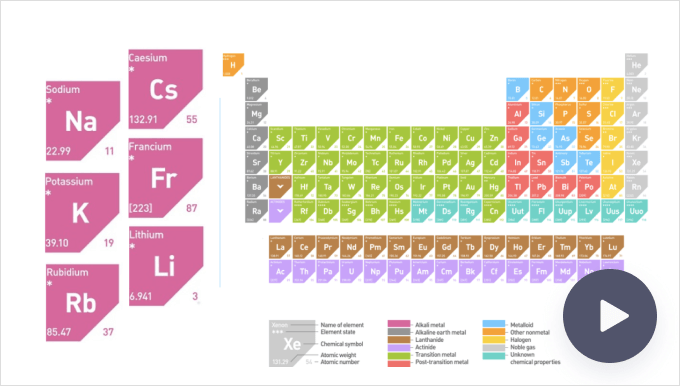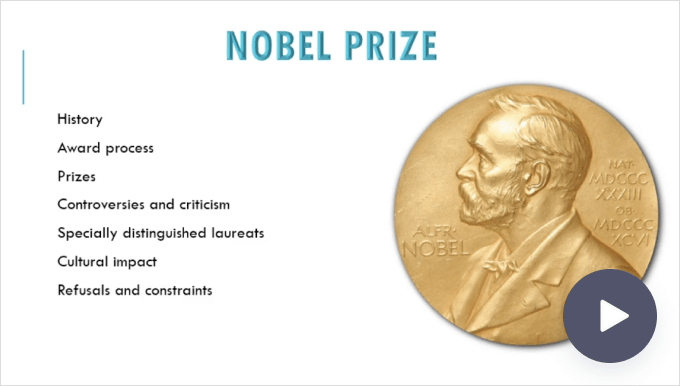iSpring Supports the Amazing Morph Transition
Here is some good news for all iSpringers with Microsoft PowerPoint 2016 and an Office 365 subscription. The latest transition in PowerPoint, Morph, gives you a unique new capability, and your iSpring software preserves the effect after conversion to online/mobile format. In this article, we've prepared a guide that will help you harness this "morphing" superpower wisely.
How the Morph transition works
The name of the Morph transition is pretty self-explanatory. It's all about a change or metamorphosis. To make this effect show its value, you need to have two adjacent slides with at least one common object, which can be an image, text, shape, SmartArt object, or chart. Simply change the object according to your taste on the second slide, and Morph will automatically figure out the difference and animate it. Consequently, people won't be forced to scour for small changes between slides themselves – instead they will see them at a glance during a smooth, gradual transition.
Morph is a real game-changer in the world of PowerPoint transitions. Of course, you can go with Origami, wherein the previous slide is folded into a bird that flutters and flies away, or any other beautiful PowerPoint effect. However, in general these animations are meant to entertain viewers, not inform them.
By concentrating on certain objects and their changes, Morph makes the transition between slides entertaining, yet meaningful. While the Origami transition prompts viewers to concentrate on a bird, Morph directs their attention exactly to where it should be.
Ideas for usage
Morph can be used in an endless variety of ways, and here are just a few ideas on how to make the most of the transition:
-
Move objects
Morph is great for representing motion between slides. It's a real gift for content developers, as it saves time and effort by saving them from using tricky Motion Paths. You can use Morph to place puzzle details in the correct order (see the demo below) or imitate real-life motion to create a movie-like presentation.
-
Change colors
Use this effect to highlight the key points of the slide; for example, the relevant elements of a chart or SmartArt object. The colors will be smoothly changed when moving from one slide to another.
-
Zoom in and out
Start with a bigger picture and go into detail, or demonstrate a close-up and gradually zoom out.
This could be a great substitute for the Grow/Shrink animations. You can use zooming to emphasize part of a big picture, or move to the various sections of your presentation from a table of contents.
-
Play with words
Highlight keywords when switching slides. This is especially effective when you have one big table of contents and gradually move from one chapter to another.
-
Rearrange characters
Play a scrabble game by rearranging letters and creating an anagram effect in a word or a phrase.
-
Use the effects in combination
This is where the real metamorphosis comes into action. You can move, recolor, resize, and rotate one or more objects all at the same time. Regardless of how you apply Morph, it also works in reverse, when moving from the second to the first slide.
How iSpring supports Morph
What if you wish to share the results of your creative work with your friends, but unlike you they are not among the proud owners of the latest PowerPoint 2016 and a subscription to Office 365. When opening the presentation in PPT or PPTX format, users of previous PowerPoint versions will see the Fade transition instead of Morph.
To make your presentation available for everybody regardless of their software or devices, publish it with an iSpring product. Our engineers carefully follow the technological trends, and as a result, iSpring authoring tools are the first (and so far the only) to support Morph when converting presentations to Web format.
Whichever iSpring software you're using, here are a few things to be aware of:
-
To preserve the effect, choose the HTML5+Flash or HTML5 format when publishing.
-
The Morph transition in PowerPoint can be used to transform Objects, Words, and Characters. At the moment, iSpring supports the Morph of Objects, and if another type of Morph transition has been applied, it will be replaced with the Fade transition after publishing. To keep the transformation of words and characters, you can convert the presentation to a video, as in some of the examples above.
-
PowerPoint allows you to record audio/video narrations only after Morph has been displayed. You can record a narration simultaneously with the transition using the iSpring editor. You can learn about other limitations of the effect below.
How to morph objects
-
Create a slide with the object in its initial state.
-
Duplicate the slide by right-clicking on it on the Slide Thumbnail pane on the left and choosing Duplicate slide.
-
On the second slide, do any of the following:
-
Move the object to where it should appear. You can take it beyond the slide to create a flying out effect. Similarly, you can take the object outside the borders of the first slide, and then place it in the center of the second one, creating a flying in effect.
-
Select an object and move it around using the Rotate handle.
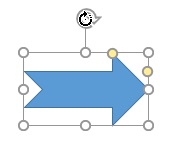
-
Expand or diminish the object by dragging its corners.
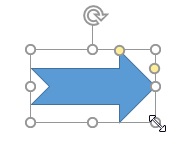
-
-
If necessary, apply Morph for other slides. For example, in the demo with the periodic table, we transferred "elements" to the table in a sequence by duplicating each successive slide and applying one change at a time.
-
To preserve the effect after publishing with iSpring, in the Publish presentation window choose the HTML5+Flash or HTML5 output option.

Now select both slides in the thumbnail pane on the left and go to Transitions > Morph. You will see how the object(s) will be animated. To see it in action again, click on the Preview button.
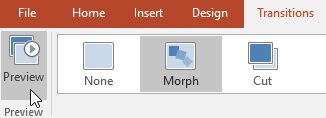
When Morph isn't the best solution
It may seem that Morph is a perfect substitute for other animations and transitions in PowerPoint. However, it has a few cons that prevent us from calling it almighty, at least for now:
-
First of all, Morph is a transition, not an animation. That's why it can only be used between slides.
-
When you move an object, Morph chooses a shortcut from Position A on the first slide to Position B on the second slide. If you want to set up a certain pathway, it's better to use the Motion Path animation.
-
If you have changed several objects, Morph will be applied to all of them simultaneously. It's not possible to make the changes appear one by one on the same slide. As a possible solution, you can distribute the changes over a few slides, but at some point this may be a problem rather than a solution.
Conclusion
The introduction of the Morph transition has become great news for all owners of PowerPoint 2016 and a subscription to Office 365. We hope that the unique support of this effect by iSpring software has made the news twice as encouraging and useful. We will be happy to get your feedback and suggestions on this and other upgrades – simply share your ideas in the comments below this article or contact iSpring support.
Related Articles

